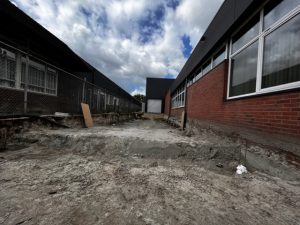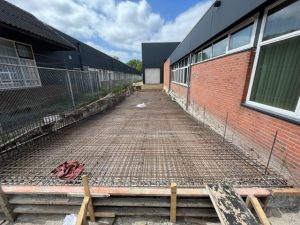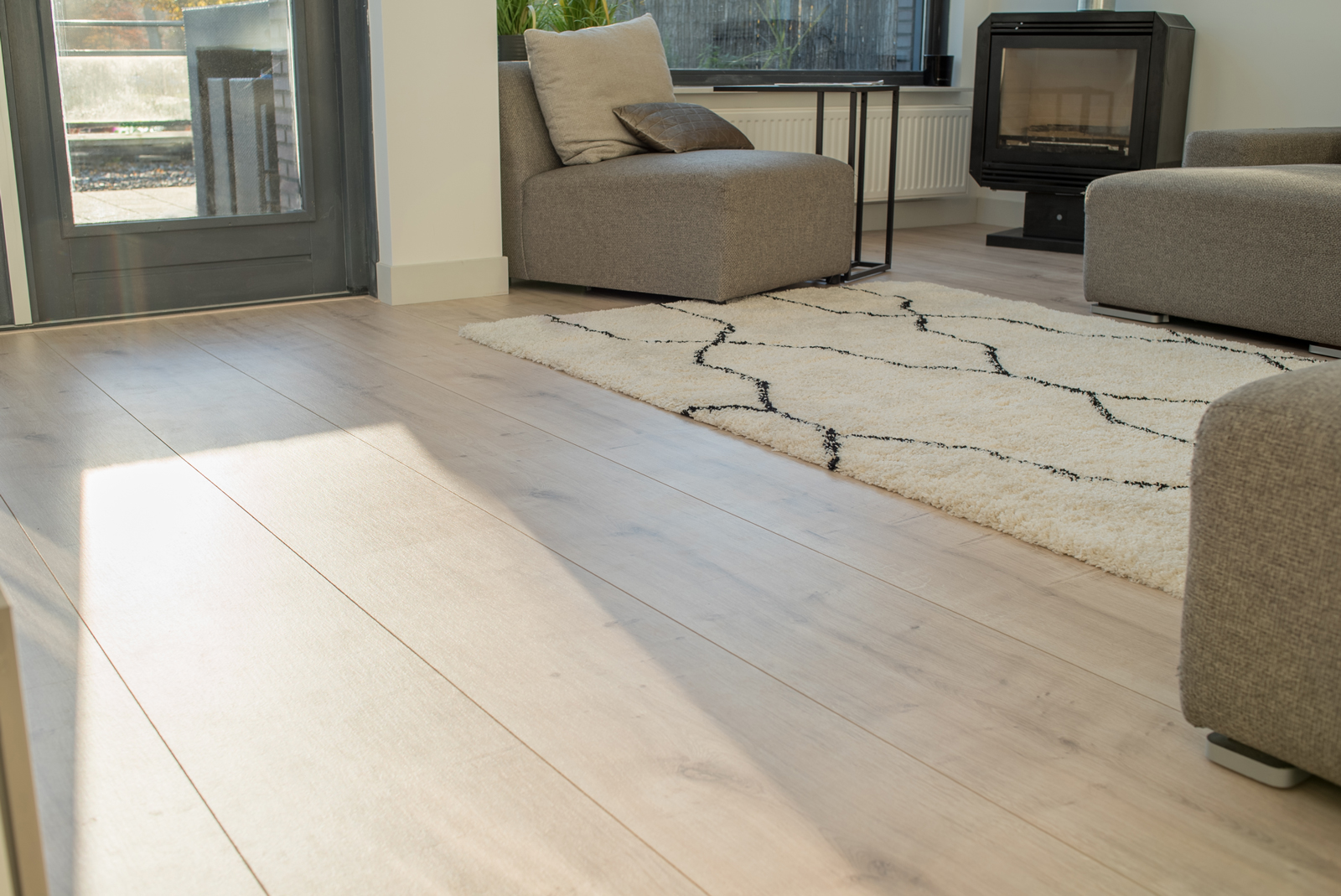We have been working on the Floer renovating for almost a year, but we are finally reaching the end. In this post, we will provide more information about the construction of the loading and unloading dock. Previously, we talked about the completion of the extra warehouse, the challenges posed by the Dutch weather, and the reason for the expansion: just 1.5 years after moving to this new building, we already found it too small! Now, it is time for the next phase: the construction of a loading and unloading dock. In this blog post, we will tell you more about it.

2000 m2 extra warehouse space
The completion of the new warehouse has created an additional 2000 m2 of space for our stock of flooring and Akupanel wall panels. But that’s not all! We have also built a loading and unloading dock, making it even easier to ship orders and take on new stock quickly. Although there are some final details that still need to be completed, the end is in sight and the handover is imminent. It’s time to move on to the next step: building the loading dock!
What is a loading pit?
A loading pit is a lowered location near a building that makes it easier for trucks to load and unload. The pit allows the truck to drive in and positions its loading area at the same height as the building, simplifying the loading and unloading process.

Construction of loading & unloading dock
This remodelling update will guide you through the process of constructing a loading and unloading dock. The first step is to excavate the site. With the help of an excavator and skilled workers, the precise space is created. A loading dock typically has a depth of 120 cm, which corresponds to the height of most truck cargo areas. After excavating the loading dock and preparing the ground, it’s time to install the rebar.
A concrete base
The structure, made of steel rods and nets, reinforces the concrete and enables it to support the weight of trucks. The next step was pouring the concrete, which needs ample time to dry completely and attain optimal strength. To achieve this, a waiting period of 30 days is necessary, under suitable Dutch weather conditions. During this time, the concrete must solidify slowly and uniformly to prevent cracking, which could compromise the dock’s durability during loading and unloading. Waiting for the concrete to dry thoroughly is a crucial step in ensuring that the loading and unloading dock is fit for use.

End in sight
At Floer, we are excited to announce the completion of our warehouse renovation. We have not only created an extra-large warehouse for our flooring and wall panels but also installed a brand-new loading dock. This addition will enable us to serve our customers even faster and more efficiently. With the renovation nearing completion, we are one step closer to achieving our goal!






